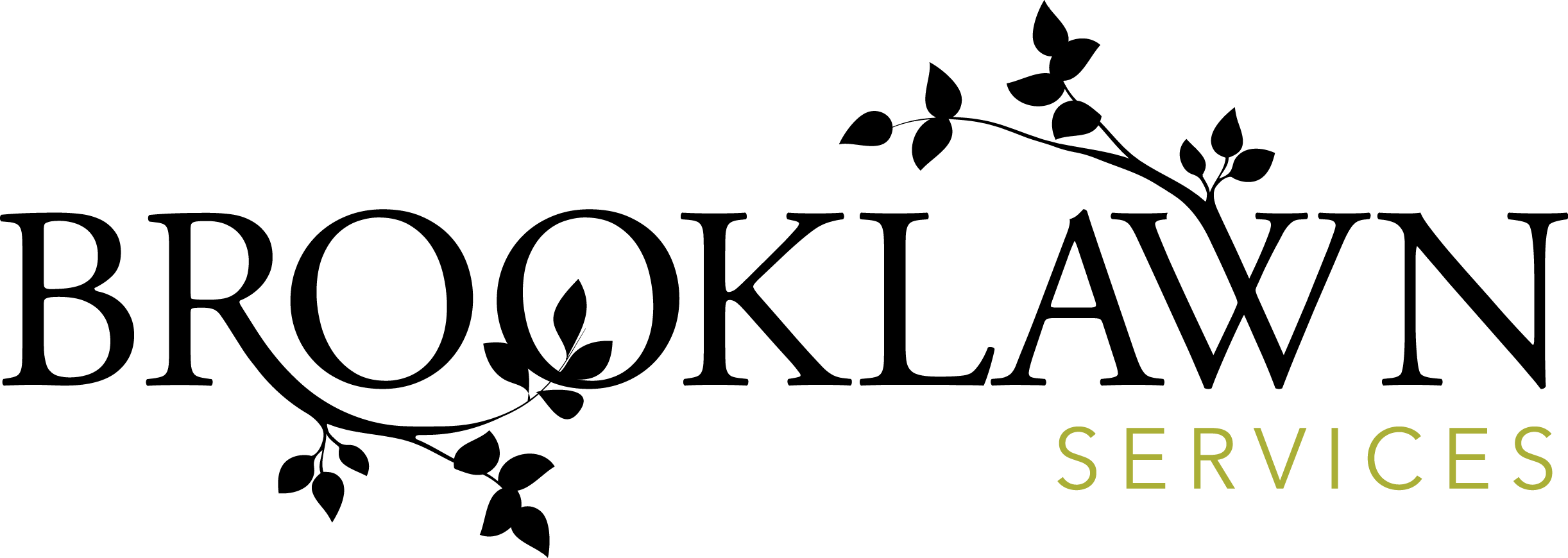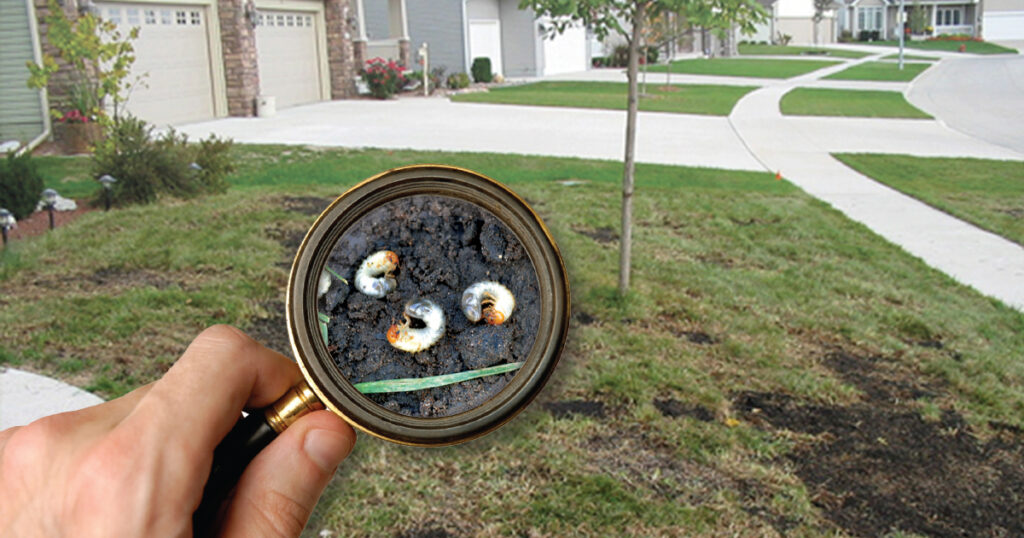Lawn grubs are a destructive pest that can cause horrible damage to your lawn. We wanted to share this information to help you proactively in the prevention of grubs infesting your lawn.
What are white grubs?
Lawn grubs, also known as white grubs, are the larval stage of several species of beetles. As seen in the photo, their bodies are white with an orange/brown color head and often appear in the shape of a ‘C’. They live underground in the soil which means they can be difficult to detect. It only takes a few short weeks for a grub-infested lawn to be completely destroyed.
What do grubs do?
White grubs feed on the roots of turfgrass and many other ornamental plants in the landscape. When the roots are consumed, the turfgrass plant has been severed from its supply of water and nutrients from the soil. Affected areas initially look as though they are suffering from drought stress. When populations have reached what is referred to as a “damage threshold,” irregularly shaped areas of brown turf will easily pull back from the soil like a rug from a floor. If sufficient numbers of grubs are present in the soil, rapid death of wide swaths of turfgrass can be expected.
What are the common signs of grubs?
Lawn damage from grubs can often be mistaken for other forms of damage. It is important to know what you are dealing with. Some signs of grub damage to a lawn include:
- Brown patches in the spring
- Randomly shaped dead patches in late summer and fall
- Your lawn feels spongy
- Damage from skunks, raccoons, or birds
How do I prevent grubs?
If you’ve discovered grubs in your lawn, but have not applied a Preventative Grub Control, your options are extremely limited and your results will be less than stellar. The most effective way to get rid of grubs is to prevent them in the first place. Preventive treatment for control of white grubs involves applying the product to the lawn in advance of egg hatch. These products are irrigated into the soil where they are bound to thatch and roots. Once egg hatch occurs, the small grubs consume the control product and eventually cease feeding and die. The benefits associated with using a preventive approach versus a curative one include a much lower environmental footprint and a greater level of efficacy.


